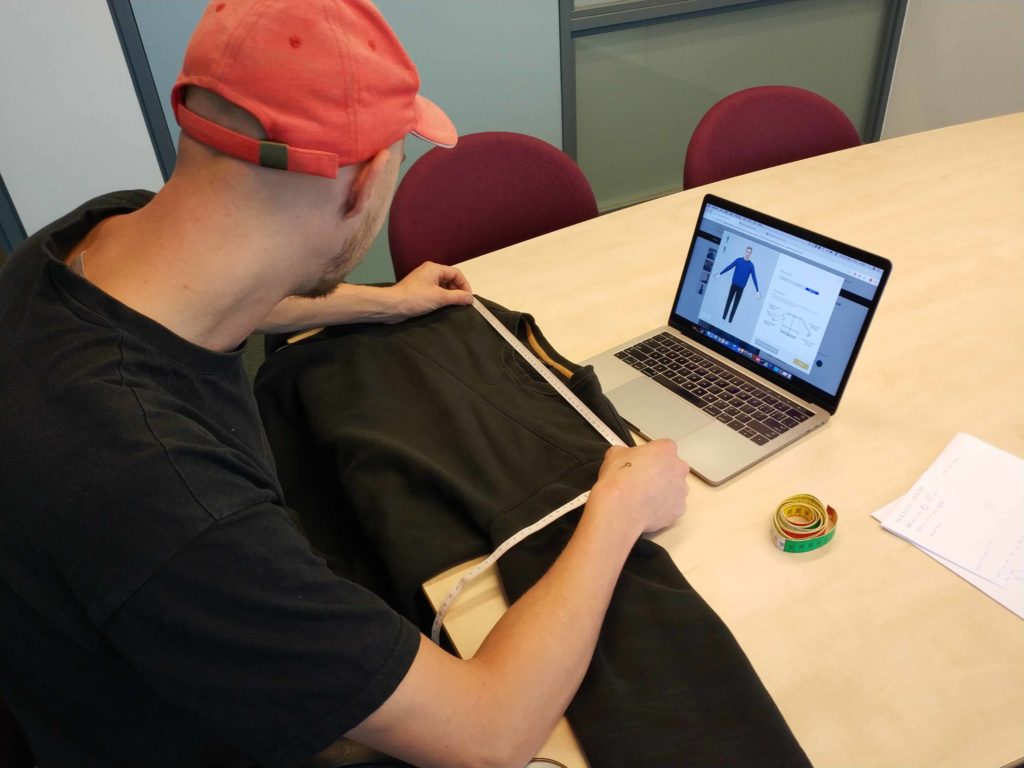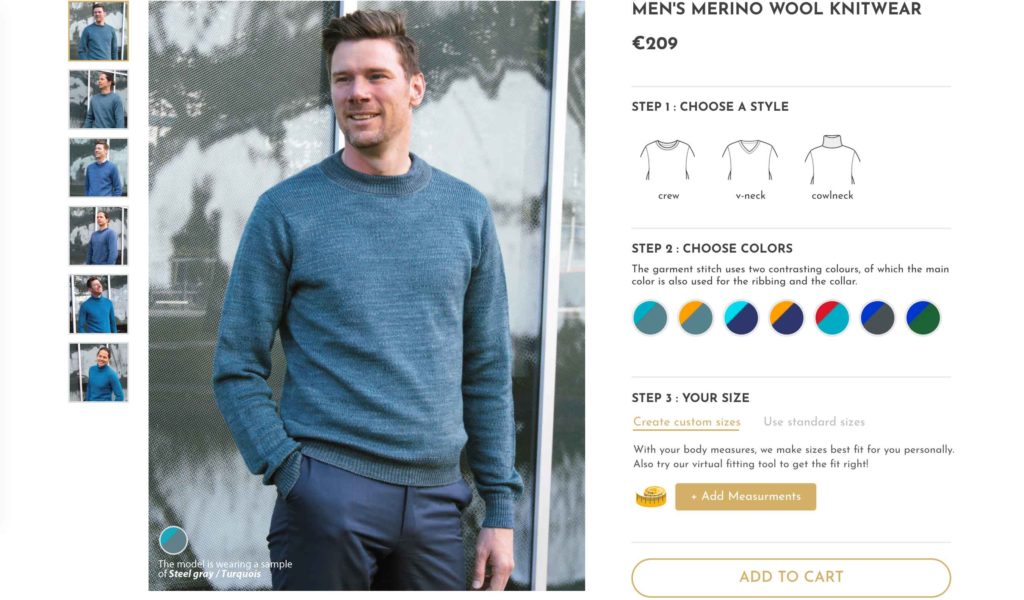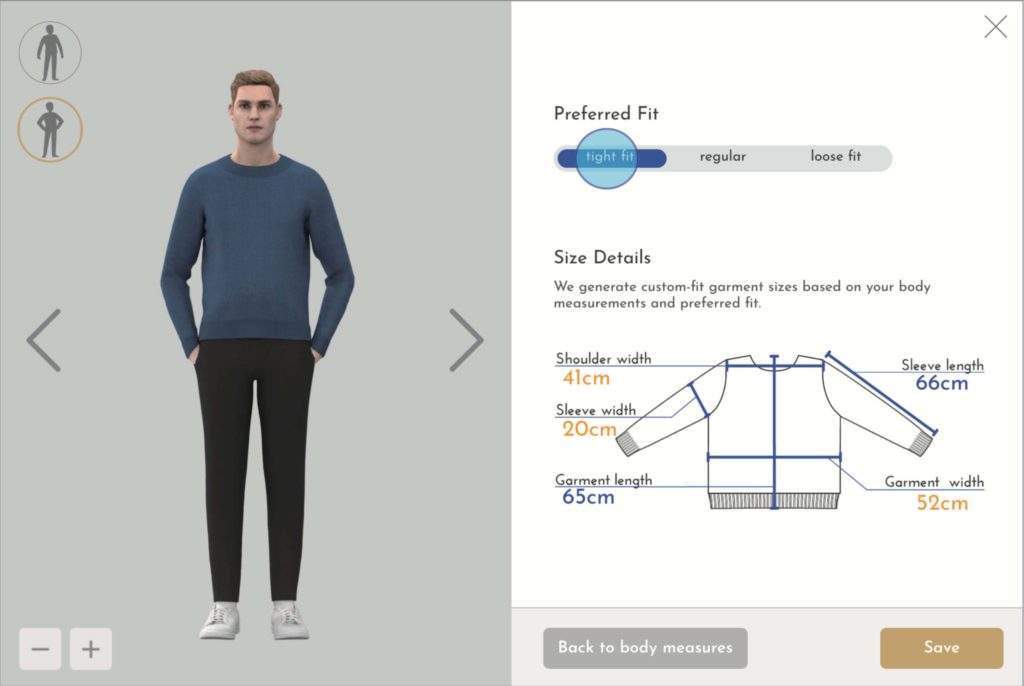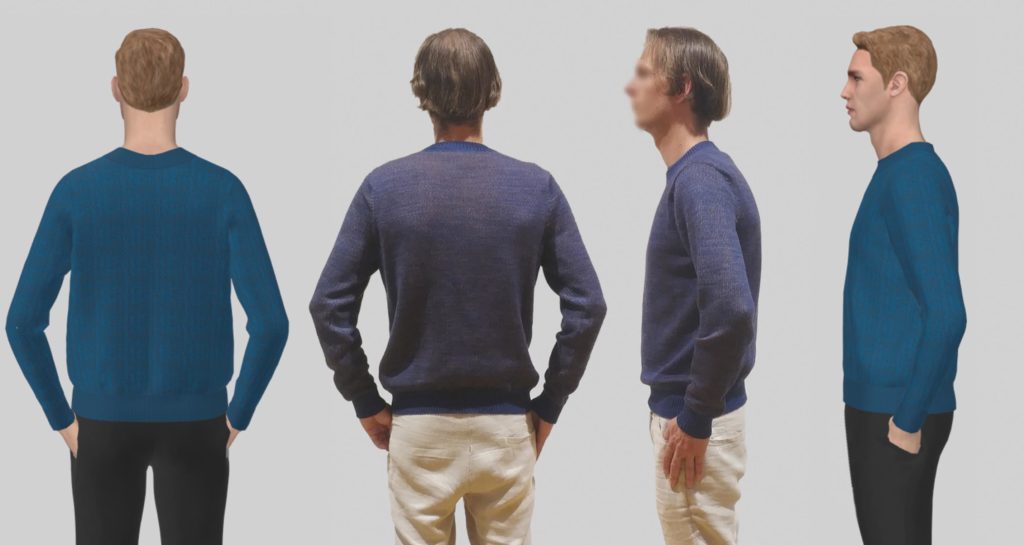Personalised Knitwear
Personalised Knitwear
On-demand production of clothing could make a sustainability-profit of up to 30%. At this moment, about 30% of the produced clothing is never worn because of misfit between supply and demand. Knitting items “fully fashioned” will cause an additional profit of 15% by eliminating waste product.
Another advantage of producing clothes on-demand is the possibility of tailoring the item to an individual customer. Such personalised, perfectly-fitting, unique products, will have an extended product lifetime, which also contributes to the sustainability of the chain. New technologies such as 3D body scanning, Virtual Reality and virtual fitting, create opportunities for the fashion industry to sell this kind of personalised clothing.

Study
The research goals of this study were as follows:
1. Investigate the desired customer interactions to support the customer through the process. Develop an optimal method for a customer to self-measure (DIY) in a digital environment. Both the interface design as the measurement system were investigated.
2. Develop a concept of UPPS, with a focus on virtual fitting. What is the user experience when visualising a personalised clothing item on a mannequin – adjusted to customer measurements – compared to using a 3D body scan?
3. Study feasibility with 20 subjects and produced knitwear.
Approach
For this project, a graduation student collaborated with two researchers from Fieldlab and two directors of the company Personalised Knitwear.
The graduation student focussed on the development of the software tool to configurate a knitted sweater, fit it and test it.
Also the desired customer interaction is investigated. This is done by analysing existing applications and testing sub-solutions throughout the process.
From statistical research by Fieldlab, it became clear that many body measurements can easily be predicted from 3-5 easy-to-measure body measurements, making it redundant to measure the whole body.
An important part of the research was the user test. Thirteen subjects configured a sweater for themselves and virtually tried it on. These sweaters were subsequently manufactured. An evaluation of the final product related to the virtual fitting was performed. The illustration below visualises the process of virtual fitting as opposed to real-life fitting of clothing.

The configuration process of the sweater
Conclusions
The new customer interaction has proven to work well for this target group. The software is easy to use and virtual fitting provides an added value to the customer.
For the customer, however, it is still difficult to judge the product on a virtual level, because ‘look and feel’ are difficult to judge based on a screen visualisation.
For the future, the first step is to provide more acknowledgement of the idea and in a point of sale, configure a sweater together with the customer. In the long term, this step will be less relevant, as the service will become more well-known and customers are getting used to configure clothes themselves and judge fabrics online. Improvement of visualisation will play a big role in that as well.
It is valuable given that only a few easy-to-measure body measurements are necessary to create a good prediction of the rest of the body. It would however be valuable to build-in a few checks, like the measurement of currently owned pieces of clothing.


Application
There is a large field of application and knowledge dissemination for this study.
A bottleneck for the businessmodel is the (currently) high manufacturing costs. Manufacturing processes need to be altered for lower series sizes to establish an attractive sales price. A promising development is 3D knitting. To explore this direction, collaboration with Fieldlab ‘3D fashion on Demand’ of the Amsterdam University of Applied science is desired.

For more information, don’t hesitate to contact Anton Jellema: A.H.Jellema@tudelft.nl

 Previous Post
Previous Post
